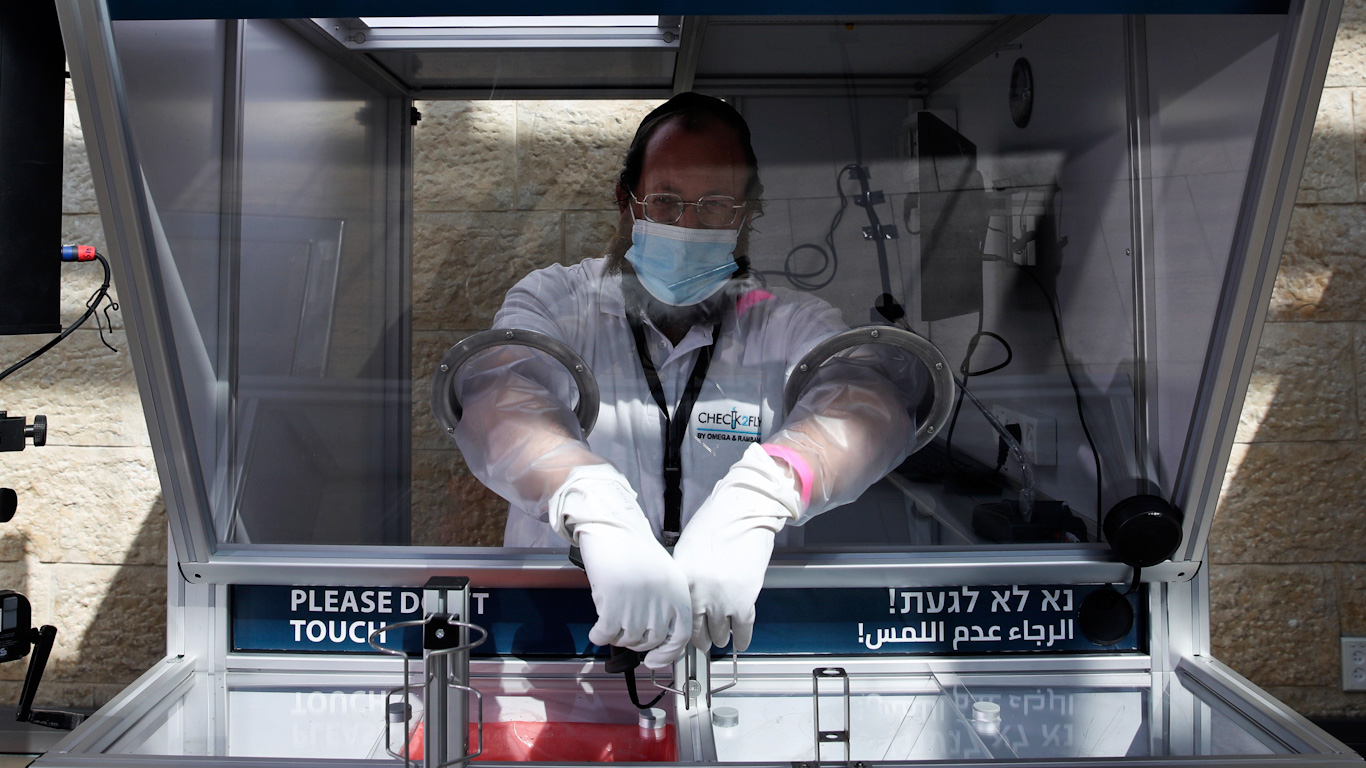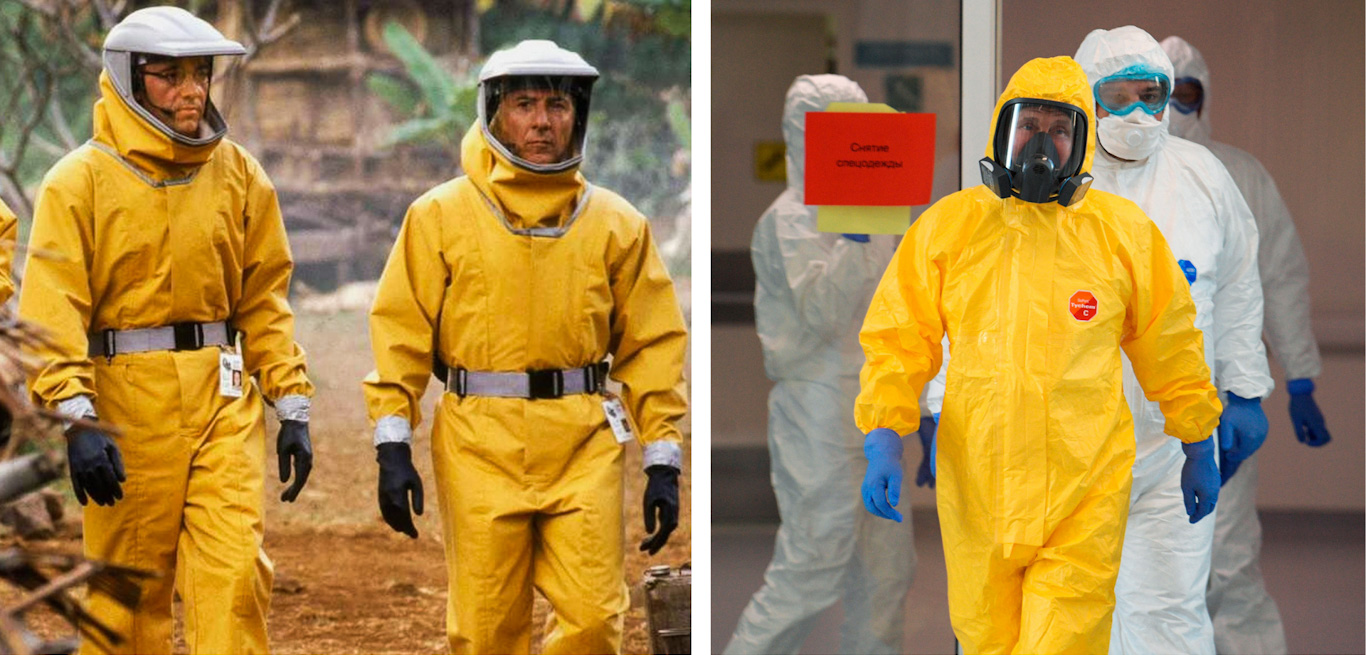The general public's willing acceptance of the draconian restrictions placed on mobility and freedom of assembly due to the coronavirus was "predicted" in fictional novels and other artistic creations over the last few decades. Is it a matter of life imitating art or something more sinister?
by Raul Diego | November 21, 2020
Life imitates art is a phrase we often hear when certain events are seemingly foretold in a painting, a song, or any number of the creative disciplines people engage in. Books, in particular, are a generous source of such lore. Sometimes, the separation between the work of art's making and the foreshadowed event is eerily short, leading to speculation that more than simple creative genius was behind its production.
Drawing too close a link between an artist's inspiration and a future event mirrored in their work is a risky proposition, but sometimes the events depicted on the page or the screen parallel real life so closely, that questions of predictive programming arise – a concept many in academia dismiss as the ravings of "conspiracy theorists" in a familiar pattern of discrediting narratives that challenge authority.
Alan Watt, the man credited with postulating the notion of predictive programming, describes it as "a subtle form of psychological conditioning provided by the media to acquaint the public with planned societal changes to be implemented by our leaders. If and when these changes are put through, the public will already be familiarized with them and will accept them as natural progressions, thus lessening possible public resistance and commotion."
While scorned by sycophants of power and gatekeepers, predictive programming is not an especially farfetched idea. Anyone who has ever put together an advertising campaign knows that conditioning public opinion is the name of the game and after nearly one century of television and a world awash in screens that relentlessly try to influence consumer behavior, predictive programming is just a small step beyond that.
Netflix and Pill
Most people become uncomfortable with the thought of "planned societal changes" imposed from up on high by an earthly hierarchy of powerful overlords but have little resistance to ascribing such broad shifts in society to providential deities or invisible forces from another realm.
Our failure to recognize that we are the creators of our own societies has been fomented by consumer-driven capitalist enterprises controlled by a relative handful of plutocrats, who invest heavily in molding human imagination by supplanting authentic expressions of community and culture with their logos, taglines, and catchy jingles.
Of course, the mechanisms of social control have grown by leaps and bounds since the advent of the Internet and big data, which allows for unprecedented levels of societal targeting, down to its individual members. Never has this been more apparent than in the situation we all find ourselves at present during this curious pandemic crisis, where the synchronized actions on the part of organs of the establishment, such as government, the press, and academia, have imposed a standardized vision of reality and decreed rules for social interaction on a largely docile society, which accepted the draconian shift without much resistance at all.
Many will recall the 1995 movie "Outbreak", which marked the start of a slew of Hollywood and international productions of films with plotlines revolving around a killer virus. Most of these movies had large marketing budgets that ran intense advertising campaigns. The essence of movies like "Pandemic," "Contagion," "28 Days Later," and dozens more in this genre, reached millions if not billions of people around the world through trailers and other means of dissemination.
Outbreak Putin Yellow Covid suit. Life imitating art? A still from the 1995 film "Outbreak," left, and Vladimir Putin donning Hoffman-esque fashion
In 2019, a Netflix series called "Explained" aired "The Next Pandemic;" an episode in the documentary-style show that warns us about a looming pandemic featuring none other than Bill Gates as one of the "experts" walking viewers through the deliberately frightening setup, which begins with apocalyptic scenarios of humanity's end and Gate's opinion on which scenario is more likely.
Unsurprisingly, the former Microsoft CEO identifies zoonotic diseases as the main threat to the world. An astonishing prediction by a man with no real background in biology or science, whose words have nonetheless been anointed by corporate media as gospel. Almost every point highlighted in the episode mirrors our present reality and the narrative about its source.
Wet markets, shutdowns, and the role of technology are all predictively examined as real possibilities just as news of the novel coronavirus was about to explode on the world scene. An incredible coincidence, to say the least. Or, is there more to this story?
Are we witnessing life imitating art or is art being used to steer life in a particular direction, that certain interests want society to go in? A book published almost twenty-five years ago might hold the answer.
Fact or Fiction
The title of the book is "2020" and it was published in 1994 by an Israeli editorial house called Keter Press, which literally translates to "Crown" or "Corona" Press. An inauspicious start for those who dismiss any speculation into predictive programming as tin-foil hat material, but all this could simply be a coincidence at this point.
The novel was originally written as a film script in 1987 by an Israeli psychiatrist and daughter of one of the Jewish state's most well-known playwrights. Hamutal Shabtai was only in her early twenties when she ostensibly wrote the story, which predicts the state of the world today as a result of the counter virus measures with uncanny accuracy and foretells of a society ravaged by a virus, which ushers in a "global health dictatorship."
The book was only published in Hebrew and never translated into English, but the 600-page tome details the burgeoning surveillance state that is currently being rolled out under the guise of Covid-19. The author describes a world where society is divided between an at-risk and healthy population, where the former are kept in quarantine.
Touching another person is fatal and everyone's movements are closely monitored and all public spaces are equipped with "biometric doors," that use a color-coded system very similar to that implemented in Amazon warehouses, that indicate who should be placed in isolation. The novel also mentions a worldwide "health treaty," which will determine social mobility and human interaction laws for all countries.
Amazon Unveils Augmented Reality to Enforce Social Distancing in New Norm for Corporate America
Amazon has started testing on augmented reality social distancing technologies following demands for public safety amid COVID-19.
Another Israeli author-produced another incredible feat of apparent clairvoyance in a book published only five years ago titled "Moratorium," which describes a virus from bats that comes out of Asia and decimates humanity. Regardless of your thoughts on predictive programming, such pinpoint accuracy begs a deeper look.
Please go to MPN to read the entire article.


No comments:
Post a Comment
Note: Only a member of this blog may post a comment.